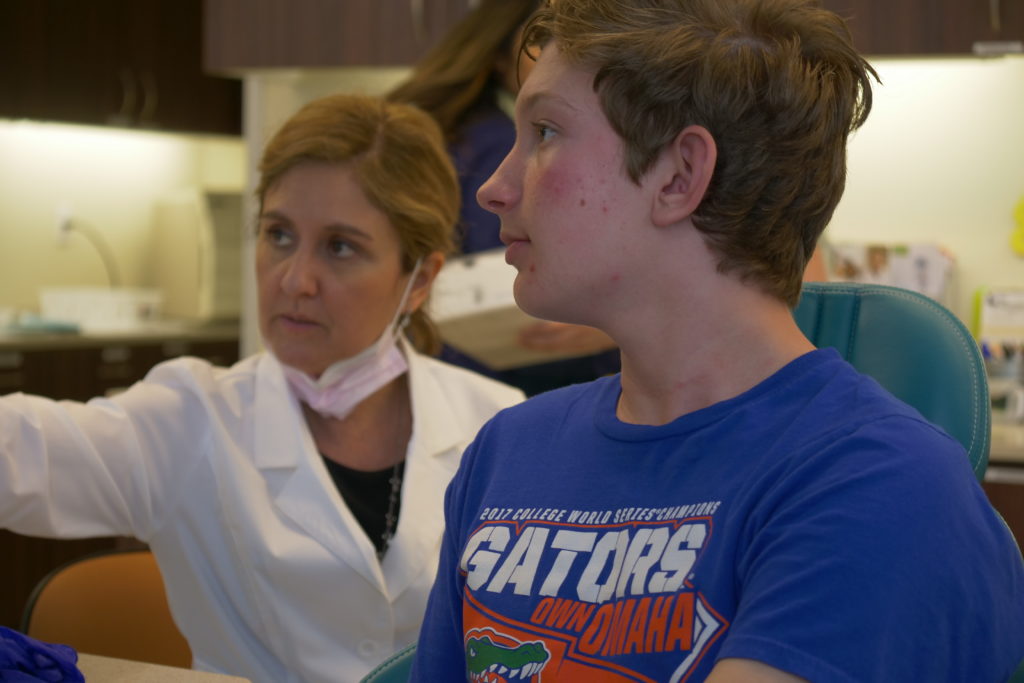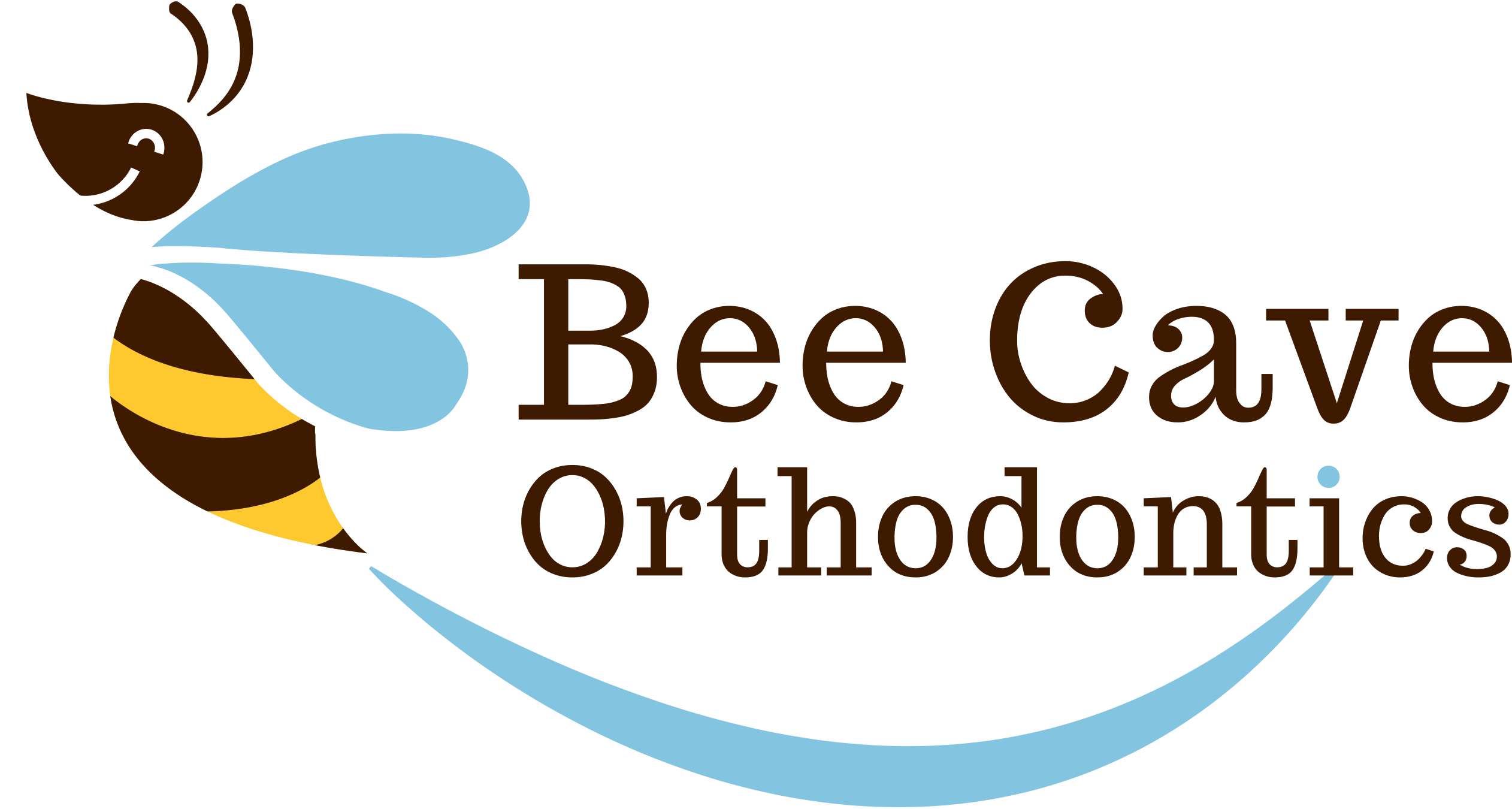Fall is a favorite season for many of us, and it’s not hard to see why. We finally get a break from some of this lingering summer heat, the trees are changing colors, PSL dominates the drink menu, and it’s the absolute best time of year to be a sports fan!
All the major sports in America are in full swing, and whether you’re part of the action or cheering it on from the stands, it’s an exciting few months. If you’re a regular participant in one or more sports and have braces on the horizon, you may be worried that orthodontic treatment will keep you stuck on the sidelines. Here at Bee Cave Orthodontics, we’ve found this is a common concern for the athletes we treat, but fortunately, it’s completely unfounded!
From Dwight Howard, Brett Favre, Venus Williams, and Cristiano Ronaldo, there are quite a few professional athletes who have shown that straightening your smile doesn’t have to mean giving up your game. When you have braces put on, you’ll still be able to participate in any athletics you normally would, but you will need to be careful to avoid damaging them, or injuring your teeth or mouth, particularly if you play contact sports. To learn how to successfully protect your braces – and smile! – while on the track, field, or court, keep reading below.
Sports-related injuries
It’s not uncommon for athletes to experience injuries to the mouth and jaw area. As a matter of fact, this is one of the most common areas for injury among those who play sports regularly, something you may have already experienced firsthand! It becomes extra important to protect your smile if you’re participating in physical activities while in braces. A fixed orthodontic appliance like braces increases the risk of oral injuries, especially those that come about from being hit by a ball or another player. While these injuries may not be life-threatening, they can be very painful, cause serious damage, and may be costly to fix. Some of the injuries we’ve seen in braces patients who play sports include:
- lacerations to the cheeks, lips and tongue
- chipped or broken teeth
- dislocation of the temporomandibular joint (TMJ)
- root fractures
The brackets and wires that your braces are constructed of add another element to these types of injuries. It’s not unusual to see bent wires or broken brackets, and these can cut or otherwise injure the inside of your mouth during a collision. When it comes to avoiding injury and protecting your teeth, mouth, and braces while playing sports, the absolute best option is a mouthguard. Here at Bee Cave Orthodontics, we recommend our braces patients invest in an orthodontic model, but even a basic mouthguard will provide some level of protection.

More about orthodontic mouthguards
Mouthguards are the #1 way to prevent damage to your braces and injury to your mouth or teeth. Easy to find, easier to use, and proven to be highly effective, mouthguards are an excellent option for all athletes, and are especially useful for high-contact sports like football or hockey. However, we recommend you wear one even if you only participate in light contact or low-impact sports, too. That’s because it only takes a small amount of pressure on your braces to irritate your mouth, or to cause small cuts and abrasions to your gums and the inside of your cheeks.
If you plan to continue playing sports throughout your orthodontic journey, an orthodontic mouthguard is a true investment in your overall oral health. Designed to be used with braces, these models are made from a high-grade silicone that will help cushion your lips from any blows, and also protect the brackets from any impact-related damage. They even stop your lips from getting caught in your braces (which is exactly as painful as it sounds!) Orthodontic mouthguards are generally a little bit larger than non-orthodontic models, in order to fit over the brackets, but the silicone makes them just as comfortable to wear.
There are some orthodontic mouthguards, including Shock Doctor and Tapout, that are designed to adjust to the movement of your teeth during treatment. These models will re-mold to your teeth multiple times as they begin to shift into their new positions, adjusting themselves based on your current bite. This is helpful for athletes undergoing orthodontic treatment as the mouthguard follows the curve of the treatment process. Most orthodontic mouthguards will come in affordable strapped or unstrapped styles, and can often be found in major sporting goods stores. However, Dr. Da Silveira is happy to recommend one for you based on your specific needs, and we can order one for you as well if you’d prefer going through our practice.

Keep your braces on the safe side with Bee Cave Orthodontics
If you’re one of our sports-playing braces patients, we encourage you to invest in an orthodontic mouthguard to keep your braces and mouth protected throughout the fall season – and the rest of the year, too! Not only will an orthodontic mouthguard shield your teeth as they move into their new permanent positions, it will also protect the orthodontic process itself. Although an orthodontic mouthguard is optimal, wearing any mouthguard is better than not wearing any mouthguard at all.
Whether you’re wearing a mouthguard or not, should you happen to receive an injury to your teeth or mouth, we suggest getting in touch with your general dentist’s office ASAP. He or she will be able to diagnose any tooth damage, including root or jaw bone fractures. Once you’ve been assessed by your dentist, get in touch with our office so Dr. Da Silveira can determine if any part of your braces needs to be replaced or repaired as well.
Getting braces doesn’t have to mean giving up on the sports you love! We’re committed to helping you continue to participate in any athletics you normally would as we work towards your BEE HAPPY smile. If you have any questions or concerns about navigating sports as a braces patient, our team is here to talk them through with you. Get in touch with us anytime you need further information or even just an extra little bit of encouragement!



